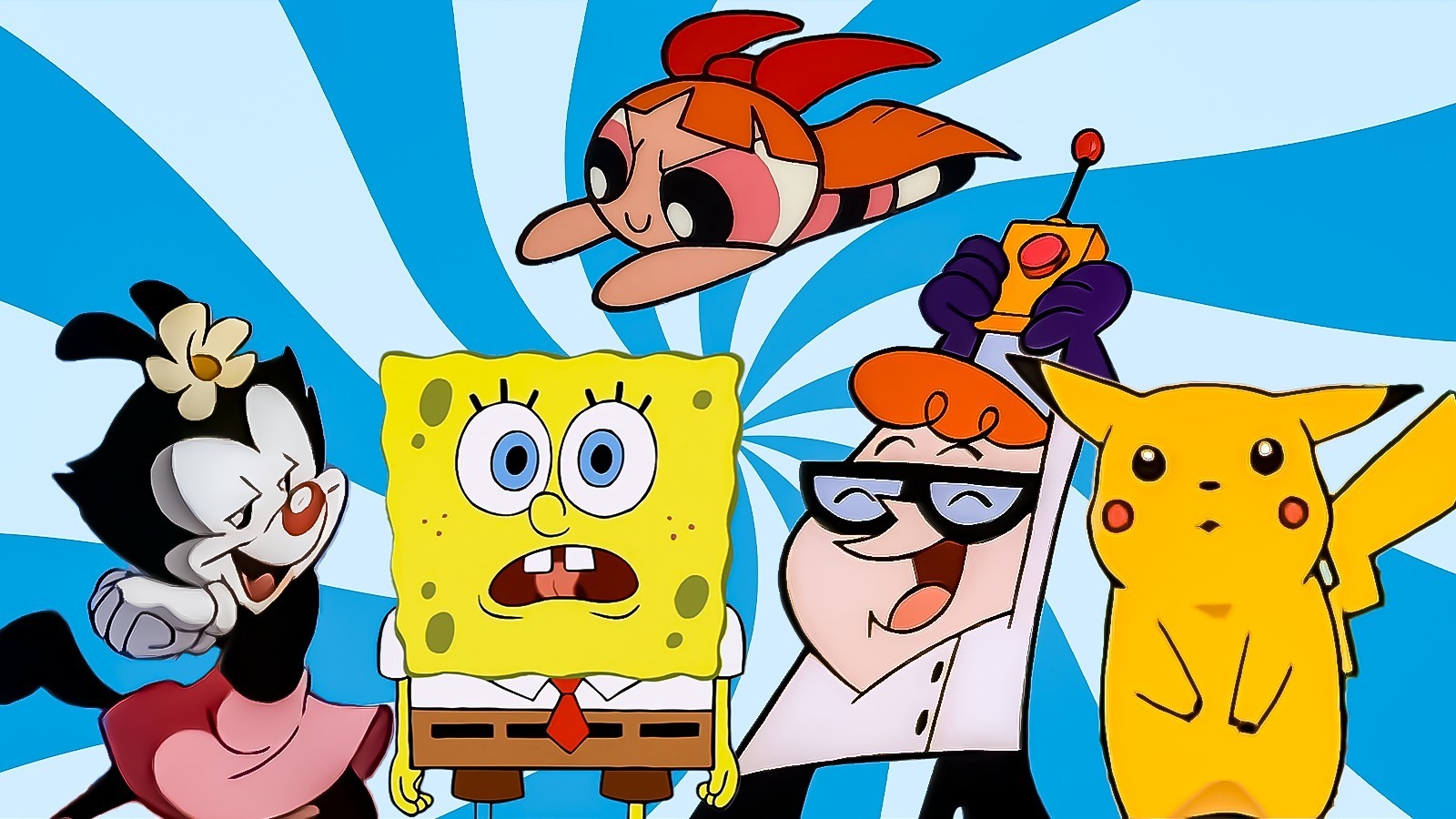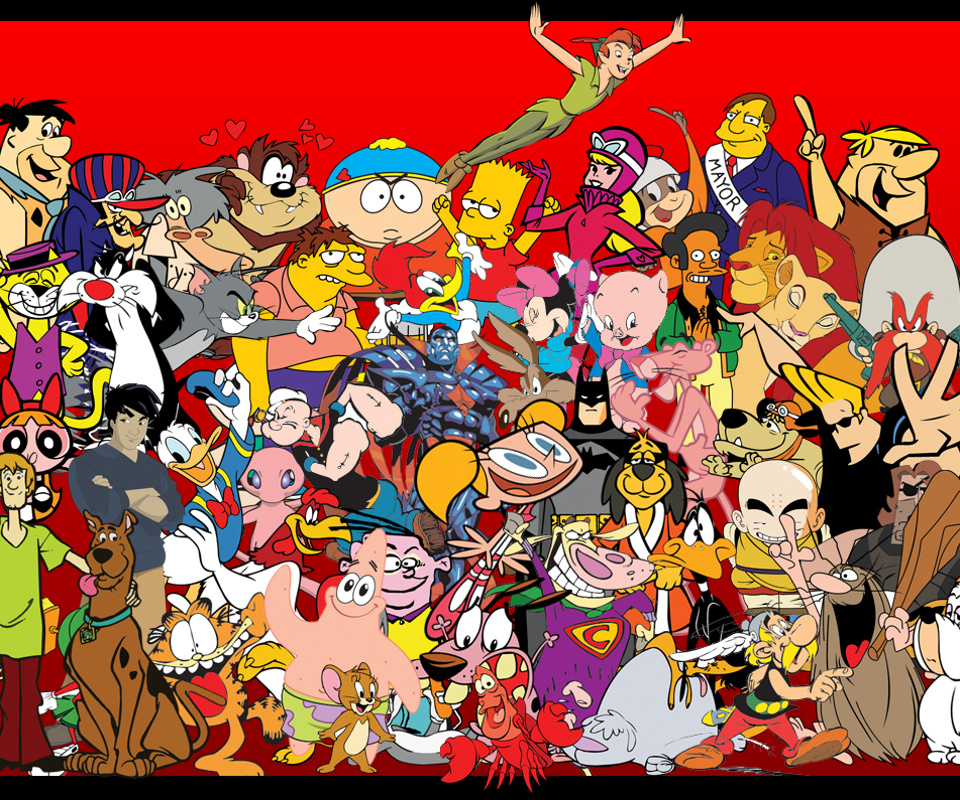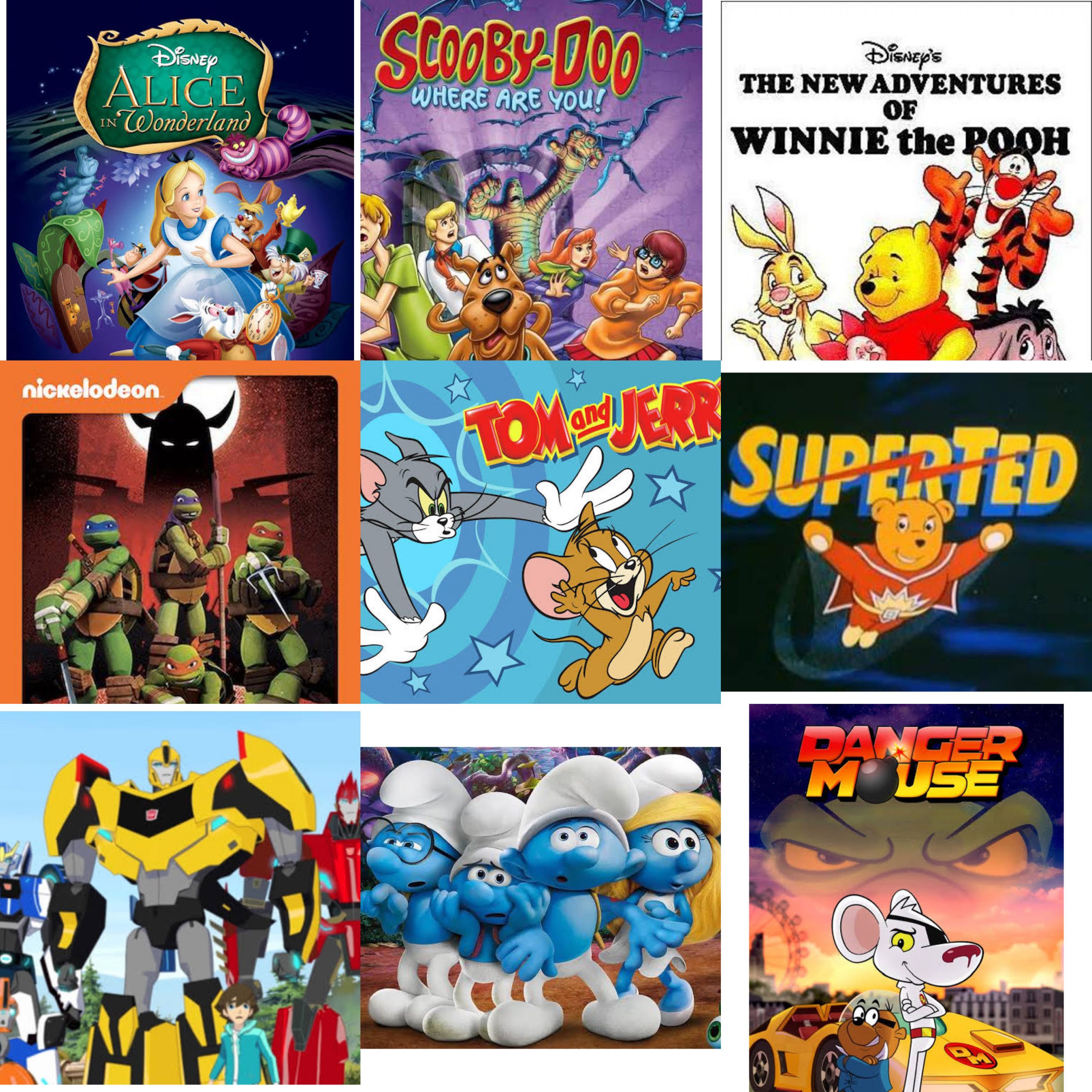Finding Fun: Why Cartoons With Big Heads Stick Around
Have you ever stopped to think about those cartoon characters with really big heads? You know, the ones where their noggin seems to take up half their body. It's a pretty distinctive look, isn't it? This particular style has been around for ages, and it just keeps showing up in new shows and old favorites. It’s a visual choice that, well, it just catches your eye and stays with you, doesn't it?
It’s not just a random design choice, you see. There's something special about these characters that makes them so appealing to so many people. They often bring a certain charm and expressiveness that smaller-headed characters might not quite capture. So, whether you're watching classic animation or something brand new, these characters really do make an impact.
We’re going to explore why these "big head" cartoons are such a hit, what makes them work, and maybe even remind you of some of your own favorites. You can, for instance, find a whole bunch of these kinds of characters right on the Cartoon Network app, which, basically, lets you watch video and play games, all in the same place. It's pretty neat how many different kinds of cartoons there are, and this style is definitely a stand-out.
Table of Contents
- Why the Big Head Appeal?
- A Look at Iconic Big Head Cartoons
- The "Chibi" Connection
- Beyond Aesthetics: The Practical Side
- Finding Your Favorites with Cartoon Network
- Frequently Asked Questions About Big Head Cartoons
Why the Big Head Appeal?
So, why do animators and artists often choose to give characters such disproportionately large heads? It’s a very specific artistic decision, and it’s actually for some very good reasons. It's not just for laughs, although it can certainly be funny. There’s a method to this particular kind of visual storytelling, you see.
Expressiveness and Emotion
One of the biggest reasons, perhaps the most important one, is how much more expression you can pack into a bigger face. Think about it: a larger surface area means more room for bigger eyes, wider mouths, and more exaggerated eyebrows. This allows artists to really push emotions to the extreme. A character can show surprise, sadness, joy, or anger in a much more obvious and impactful way. It’s like having a bigger canvas for feelings, so to speak.
When a character's face takes up a good chunk of the screen, you just naturally pay more attention to their reactions. This helps the audience connect with them more quickly and understand what they're feeling without needing a lot of dialogue. It's a visual shortcut, basically, that helps tell the story. This is pretty useful, especially for shows that might be aimed at younger viewers who are still learning to read social cues.
Relatability and Youthful Charm
Another thing is that big heads often make characters seem more youthful or childlike. Young children naturally have larger heads in proportion to their bodies, so this design choice can make characters feel more innocent, vulnerable, or just generally adorable. This can be particularly effective for cartoons that want to appeal to a younger audience, or for characters who are meant to be seen as sweet or harmless. It’s a visual cue that, you know, just works on a certain level.
This design can also make characters feel more approachable. There’s something inherently non-threatening about a character with a big, round head and often big, friendly eyes. They seem less serious, more playful. This helps to create a welcoming atmosphere for the viewer, making them feel comfortable with the characters almost immediately. It’s a pretty clever trick, actually, for getting people to like who they see on screen.
A Look at Iconic Big Head Cartoons
When you start thinking about it, you'll realize just how many popular cartoons use this big-headed style. It's a pretty common thread across different eras and different types of shows. From classic animation to what's on screens today, this design choice pops up again and again. It’s almost like a timeless visual language that artists use.
Cartoon Network Favorites
Speaking of popular shows, the Cartoon Network, as you know, is home to a lot of your favorite cartoons, and quite a few of them feature characters with this distinct look. You can get full episodes, video clips, and free games right there on the Cartoon Network app, which is available for iPhone, iPad, and iPod touch. It's pretty cool how much content is packed into one spot.
For example, if you play with your favorite cartoon network characters in Teen Titans Go, you’ll notice their design. The characters in Teen Titans Go, like Robin, Starfire, and Cyborg, they all have pretty sizable heads compared to their bodies. This really helps to emphasize their often silly and exaggerated expressions, which is a big part of that show's humor. You can even play games like Zapping Zone with Teen Titans Go characters on Cartoon Network, so you can see that style in action while having fun.
Then there's Ben 10. While maybe not as overtly "big-headed" as some, Ben’s design and the way his alien forms are sometimes drawn lean into that slightly more expressive, exaggerated head shape. You can play Ben 10 Steam Camp game and enjoy an exciting adventure on Cartoon Network, and you’ll see how his character is drawn. This design choice just makes characters more dynamic, somehow, and more fun to watch during those action sequences.
Other Notable Examples
Beyond Cartoon Network, this style has a long and interesting history. Think about characters from older cartoons, some of them had heads that were, well, just a little bit out of proportion to their bodies. It was a way to make them stand out and be instantly recognizable. This visual shorthand has been around for a very long time, actually.
Even in modern animation, you see it everywhere. Some video game characters, especially in mobile games or those with a more stylized look, also adopt this design. It helps them feel friendly and approachable, which is great for drawing players in. It's a testament to how effective this simple design choice really is across different types of media, and across different age groups, too.
The "Chibi" Connection
When talking about cartoons with big heads, it’s almost impossible not to mention "chibi" style. This is a term that comes from Japan, and it basically means "small" or "cute." Chibi characters are usually drawn with very large heads, tiny bodies, and often simplified features, like big, shiny eyes. This style is used to make characters look adorable, humorous, or sometimes even a bit vulnerable. It’s a very popular aesthetic, particularly in anime and manga, and it has definitely influenced Western animation too.
The chibi style really pushes the idea of a big head for maximum cuteness and expression. It’s a deliberate exaggeration that emphasizes certain qualities. You see characters from serious action shows suddenly appear in chibi form, and they become instantly funny or endearing. It’s a way to show a different side of a character, you know, a softer or more comedic side. This shows just how versatile the big-head design can be, adapting to different moods and purposes.
Beyond Aesthetics: The Practical Side
It's not just about looking good or being expressive; there are some practical benefits to designing characters with big heads too. For one thing, they are often easier to draw consistently. With a larger head as a focal point, the rest of the body can be simpler, which can save time and effort in the animation process. This is especially true for shows that need to produce a lot of animation quickly, so it's a very practical consideration for studios.
Also, big-headed characters are often very memorable. Their distinct proportions make them stand out in a crowd, which is great for branding and merchandise. Think about how easily you can recognize a character just from their head shape. This makes them perfect for toys, clothing, and other products. It’s a smart design choice that helps with character recognition and, you know, makes them popular for all sorts of things beyond just the screen.
This design choice can also make characters more visually impactful on smaller screens, like those on your iPhone or iPad. When you're watching video clips or playing games on the Cartoon Network app, characters with larger, more distinct heads can be easier to see and follow. They just pop a bit more, which is a real plus for mobile viewing. It’s a very practical benefit that helps with the overall viewing experience, actually.
Finding Your Favorites with Cartoon Network
If you're a fan of these kinds of characters, or if you're just looking for some fun new shows and games, the Cartoon Network app is a pretty good place to start. As we mentioned, it lets you watch video and play games, all in the same app. You can get full episodes, live tv, collectibles, and more, and it’s now available for iPhone, iPad, and iPod touch. It’s a pretty comprehensive way to enjoy your favorite cartoons.
The mix is your personal video feed, customized just for you. As you tell us your favorite shows and rate videos, the mix will learn what you like and what you don't like. So, if you're into cartoons with big heads, the app will, basically, start showing you more of what you love. You can play disc duel, an exciting online game featuring Cartoon Network characters, or just browse through the vast library of content. There’s always something new to find, and it really does try to give you what you want to see.
You can learn more about Cartoon Network on our site, and if you're into games, you might want to check out this page dedicated to Cartoon Network mobile games. There are so many adventures to enjoy with your favorite characters, whether they have big heads or not. It's a really fun way to spend some time, and it's all right there at your fingertips.
Frequently Asked Questions About Big Head Cartoons
Here are some common questions people ask about this particular style of animation:
Why do animators draw characters with such big heads?
Animators often draw characters with larger heads to make them more expressive. A bigger head gives more room for exaggerated facial features like eyes and mouths, which helps to show emotions clearly. It also often makes characters look more youthful or cute, which can appeal to a wider audience, especially younger viewers. It's a very effective visual trick, you know, for conveying personality.
What cartoons have characters with small bodies and big heads?
Many cartoons use this style! Some popular examples include Teen Titans Go, where the characters have noticeably large heads for comedic effect. The Japanese "chibi" style is also known for very small bodies and big heads, which you see in many anime and manga. This design is often used to make characters look adorable or humorous, so it's a pretty common visual choice in a lot of different shows.
Is the "chibi" style the same as drawing big head cartoons?
The "chibi" style is a specific type of big head cartoon design, yes. It's a Japanese art style that typically features characters with very large heads and small, simplified bodies, often used to make them look cute or funny. While not all cartoons with big heads are "chibi," the chibi style is definitely a very prominent example of this design choice. It’s a very distinct look, actually, that has a lot of charm.
This design choice, with its roots in making characters more expressive and endearing, continues to be a favorite among creators and viewers alike. It’s just one of those things that works, no matter how much animation styles change over time. It really does make characters pop, and that's a good thing for entertainment. You can, of course, find many examples of this style, both new and old, on platforms like the Cartoon Network app, which offers a vast collection of fun adventures and characters to enjoy.
For more on animation history and character design, you might find this external resource interesting: Character Design on Wikipedia. It gives a good overview of how characters come to life, and it’s pretty informative, actually.

15 Best 90s Cartoons, Ranked

Best Mid 80s And 90s Cartoons | Funfacts - Picescorp Blog

Throwback Thursday: Nostalgic cartoons of old | Marketing Edge Magazine